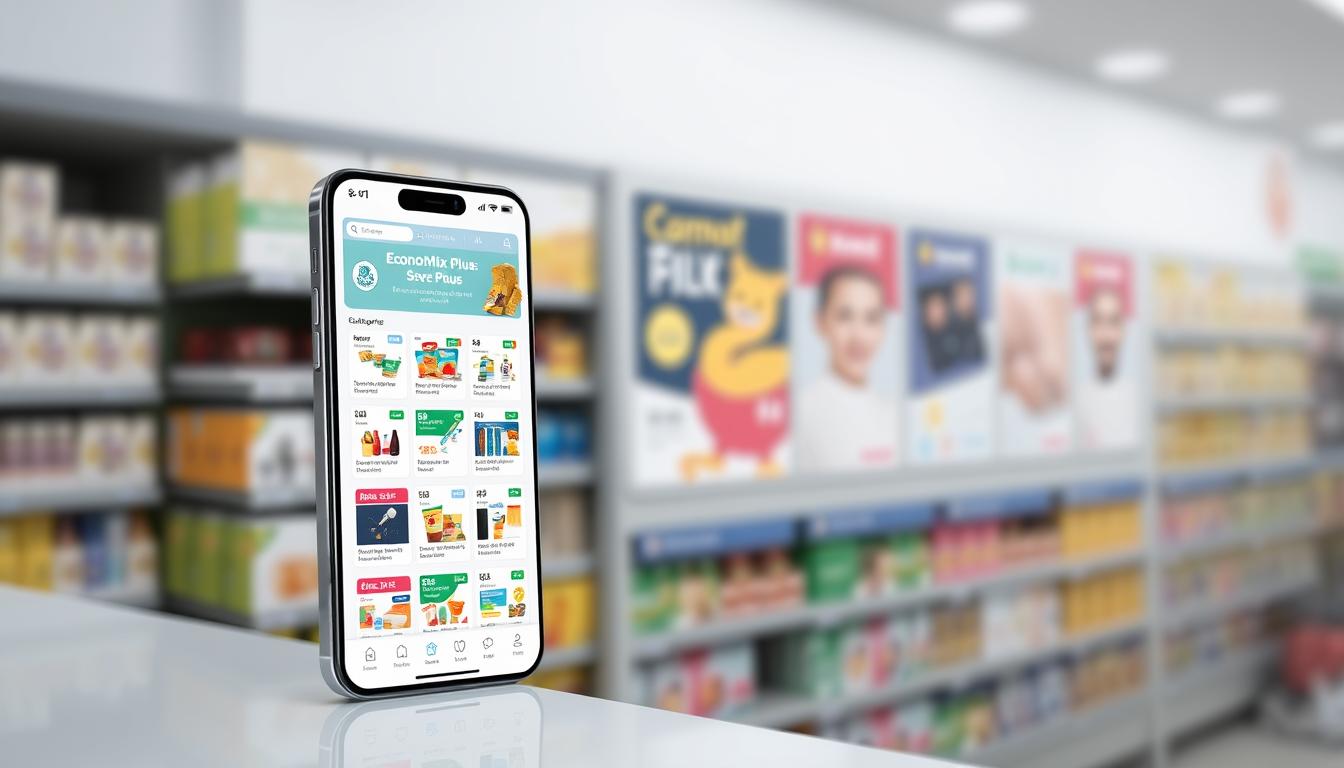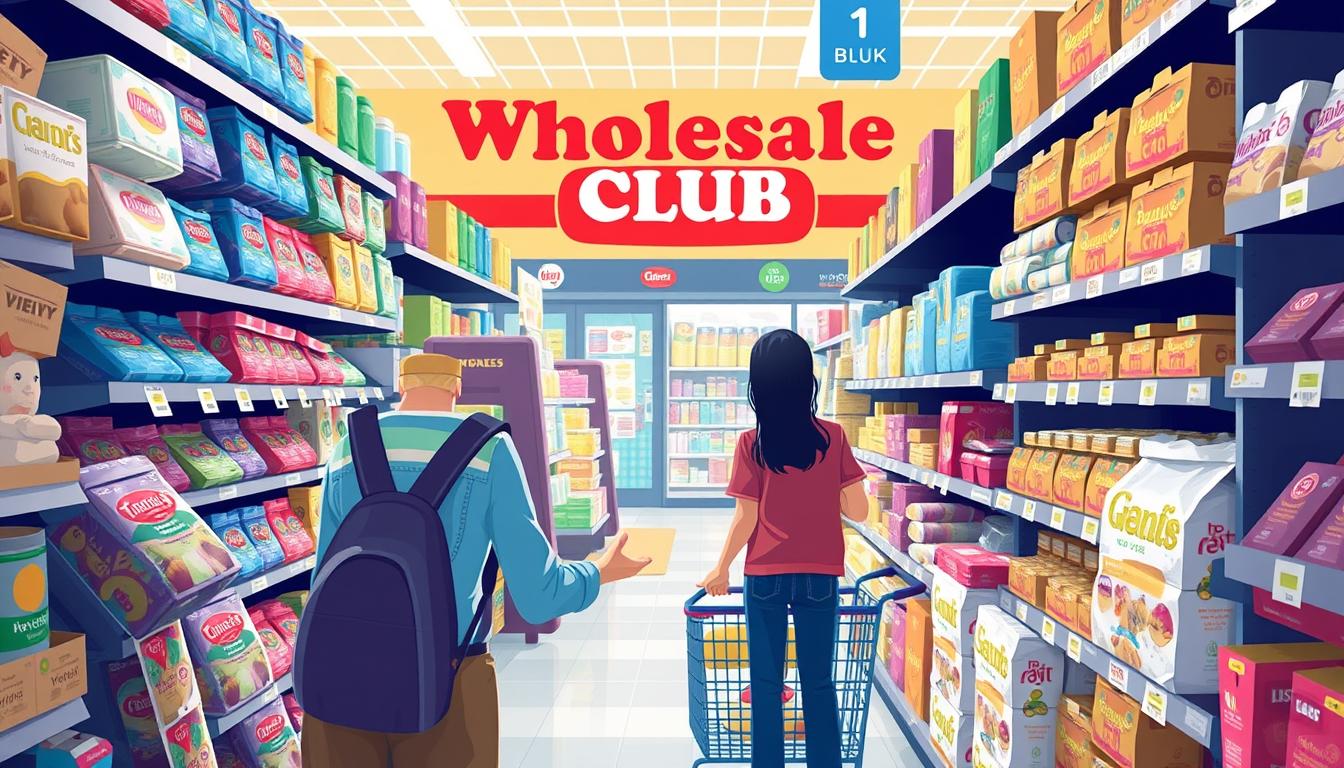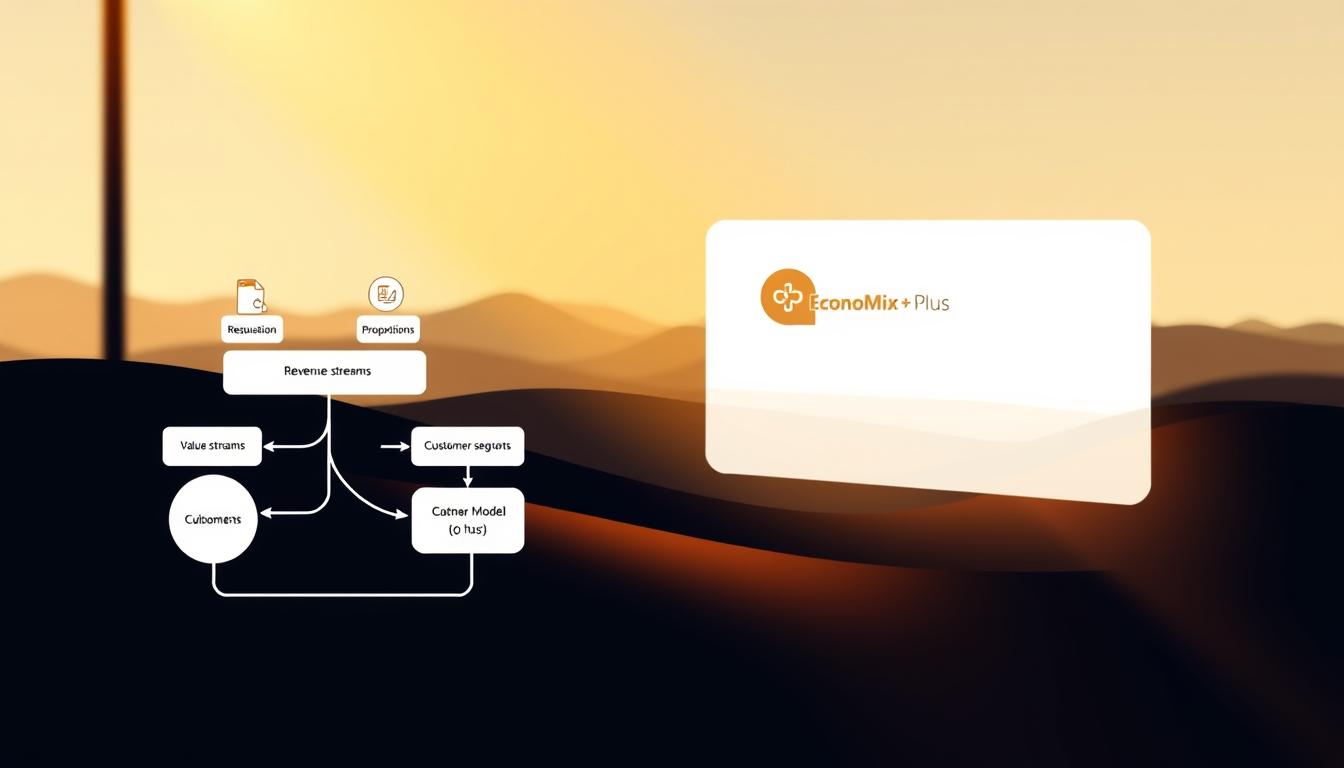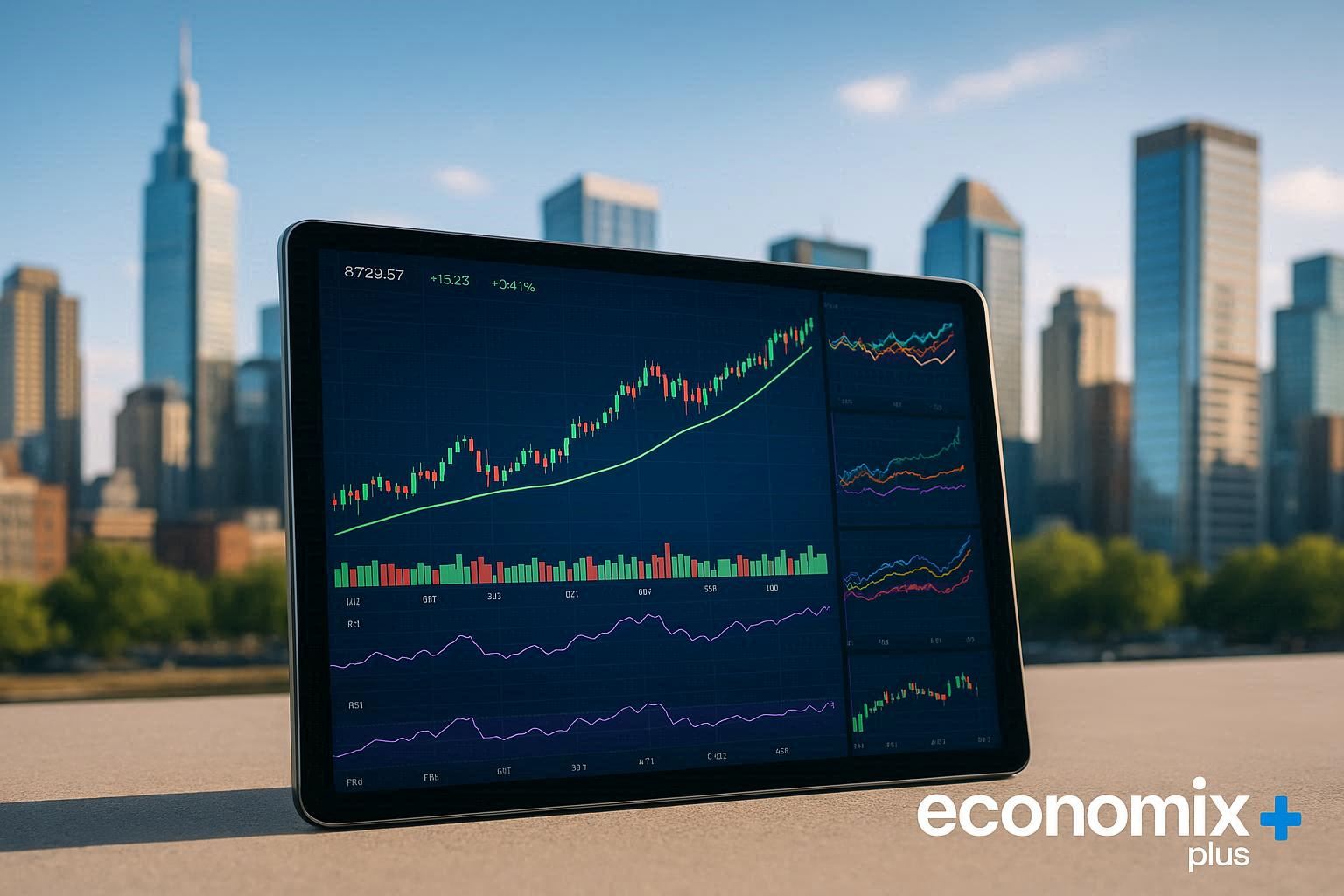In today’s challenging economic climate, finding ways to save money while shopping has become more crucial than ever for American households. With the average American spending around $6,053 annually on groceries, according to the U.S. Bureau of Labor Statistics, it’s time to rethink your shopping habits.
This comprehensive guide will walk you through proven strategies to reduce your shopping expenses without sacrificing quality or convenience. By implementing these strategies, you can potentially save hundreds or even thousands of dollars each year.
Key Takeaways
- Effective pre-shopping preparation techniques
- Leveraging technology for maximum savings
- Developing smarter shopping habits
- Stretching your budget further
- Building better financial habits
Why Smart Shopping Matters in Today’s Economy
In today’s economic landscape, smart shopping is more crucial than ever for managing your household budget effectively. With inflation affecting prices and consumer spending habits changing, understanding how to shop smartly can make a significant difference in your financial stability.

The Impact of Inflation on Grocery Prices
Inflation has a direct impact on grocery prices, making it essential to adapt your shopping strategies. As prices rise, the same amount of money buys less food than it did previously. This means that consumers need to be more vigilant and proactive in their shopping habits to avoid overspending.
To maximize your savings, make sure to check the price per item at different grocery stores, as prices can vary significantly from one store to another. Additionally, consider buying in bulk for non-perishable items, which can often lead to greater savings over time.
Being aware of these changes helps you plan your budget accordingly and apply these tips next time you create your food list. Moreover, taking advantage of seasonal sales and using coupons can further enhance your ability to stretch your dollar further, ensuring that you get the most value for your purchases.
Average American Spending on Groceries
According to the U.S. Bureau of Labor Statistics, the average American household spends approximately $504 a month on groceries, totaling over $6,000 a year. This significant expenditure represents a substantial portion of many households’ annual budget. Understanding your grocery spending in relation to this average can help identify areas for improvement.
Plan Before You Shop
Before you head out to shop, it’s essential to plan your trip to save both time and money. This simple step can significantly impact your grocery bill and help reduce food waste. By taking a few moments to outline your shopping strategy, you can prioritize your needs and ensure that you are only purchasing what is necessary. This not only helps in sticking to your budget but also minimizes the likelihood of buying items that may go unused, which contributes to waste.
Furthermore, planning allows you to take advantage of sales and promotions, ensuring that you maximize your savings while shopping. By considering your meals for the week ahead and making a list based on those plans, you create a focused approach that streamlines your shopping experience.
Create and Stick to a Shopping List
Creating a shopping list is a straightforward way to stay on track while shopping. By planning your meals and noting down the necessary ingredients, you can avoid buying unnecessary things that may end up going to waste. A well-structured shopping list not only helps you remember what you need but also serves as a guide to keep you focused on your purchases.
Dr. Wilson suggests that eating before you shop can also help you avoid impulse purchases driven by hunger, which can lead to buying items that are not part of your meal plan. Additionally, consider organizing your shopping list by store layout, grouping similar items together, which can further streamline your shopping experience and save you time.
Meal Planning to Reduce Food Waste
Effective meal planning is a powerful strategy that can help you save money on food and reduce waste. Americans waste approximately 30-40% of their food supply, which translates to throwing away hundreds of dollars per household each year. By planning your meals around what’s on sale, what’s in season, and what you already have in your pantry, you can create a more efficient shopping experience.
Here’s a simple table to help you plan your meals and reduce food waste:
| Meal | Ingredients | Cost |
|---|---|---|
| Breakfast | Eggs, Bread, Milk | $3.50 |
| Lunch | Chicken, Rice, Vegetables | $5.00 |
| Dinner | Pasta, Sauce, Ground Beef | $6.50 |
Taking the time to plan your meals can help you make the most of your food budget and minimize waste. By being mindful of what you buy and what you already have at home, you can save money and reduce your environmental impact.

Leveraging Store Loyalty Programs
Making the most of store loyalty programs is a simple way to cut down on unnecessary expenses. By understanding how to use these programs effectively, you can enjoy significant savings on your grocery bills.
How to Maximize Points and Rewards
To get the most out of your store’s loyalty program, it’s essential to understand how to maximize your points and rewards. Many stores offer bonus points for certain purchases or during specific promotional periods. Keep an eye on these opportunities to boost your savings. You can also earn additional rewards by referring friends to the loyalty program or by participating in special events.
Digital Coupons Through Store Apps
Store apps have revolutionized the way we use coupons. With digital coupons, you can browse available discounts and load them onto your digital loyalty card with just a few taps.

The convenience of digital couponing means you’ll never forget your savings at home—they’re automatically applied when you scan your loyalty card or enter your phone number at checkout.
| Benefits | Traditional Coupons | Digital Coupons |
|---|---|---|
| Ease of Use | Requires physical clipping | Easy loading through store apps |
| Personalization | Limited to available print coupons | Offers personalized savings based on purchase history |
| Convenience | Risk of forgetting at home | Automatically applied at checkout |
By leveraging digital coupons through store apps, you can enjoy a more streamlined shopping experience and maximize your savings with minimal effort.
The Art of Couponing in the Digital Age
With the rise of digital coupons, savvy shoppers can now maximize their savings like never before. The digital age has transformed the way we approach couponing, making it easier to find and use coupons for various products and services.
This evolution has not only simplified the process of accessing discounts but has also introduced a level of personalization that traditional paper coupons simply cannot match. Shoppers can now receive tailored offers based on their purchasing habits, ensuring that the savings they receive are relevant to their needs and preferences.
Finding Digital Coupons Online
You can find digital coupons through various online platforms, including store websites and reward portals like Kellogg’s Family Rewards. These portals offer exclusive discounts on a range of products, from cereals to household essentials. To make the most of digital coupons, it’s essential to understand how to navigate these platforms and combine offers for maximum savings.
Combining Coupons for Maximum Savings
Advanced couponing strategies involve combining multiple discounts on a single purchase. This can be achieved by stacking store coupons with manufacturer coupons, using loyalty discounts, and taking advantage of rebate apps. By timing your coupon usage to coincide with store sales, you can transform good deals into exceptional ones.
| Coupon Type | Description | Potential Savings |
|---|---|---|
| Store Coupons | Offered by stores for specific products | Up to 50% off |
| Manufacturer Coupons | Provided by product manufacturers | Up to 30% off |
| Loyalty Discounts | Rewards for frequent customers | Additional 5-10% off |

Cash-Back and Rebate Apps Worth Downloading
In the quest to save money on grocery shopping, leveraging cash-back and rebate apps can be a game-changer. These apps offer a simple way to earn rewards on your everyday purchases. By utilizing these digital tools, shoppers can maximize their savings effortlessly.
For instance, many of these apps allow users to scan their receipts after shopping, which then translates into points or cash back that can be redeemed later. Additionally, some apps even provide bonuses for purchasing specific items or reaching certain spending thresholds, further incentivizing users to save. This combination of convenience and rewards makes cash-back and rebate apps an essential part of modern grocery shopping strategies.
Fetch Rewards: Earn Points on Receipts
Fetch Rewards allows you to earn points on your grocery receipts, regardless of the store or payment method. This means that no matter where you shop, you can easily accumulate points that can later be redeemed for various rewards, including gift cards to popular retailers.
It’s a straightforward way to earn rewards without having to clip coupons or browse through offers. The app also features user-friendly navigation, making it simple for anyone to get started and track their earnings. Many users appreciate the ease of scanning receipts, which saves time and enhances the shopping experience.
Ibotta: Cash Back on Specific Products
Ibotta offers cash back on specific grocery items, making it easy to save money on the products you buy regularly. The app features a wide range of offers that are frequently updated, allowing users to find deals on both everyday essentials and special items.
Simply browse the offers, shop as usual, and upload your receipt to earn cash back. Additionally, Ibotta often provides bonuses for purchasing multiple items or for completing certain tasks, further enhancing your savings potential. This makes ita valuable tool for budget-conscious shoppers looking to maximize their grocery spending efficiency.
Rakuten: Cash Back for Online Grocery Orders
Rakuten is a cash-back site that rewards you for online grocery orders, offering up to 15% cash back at select retailers. This cash-back program includes a variety of popular grocery chains, allowing shoppers to earn money back on their everyday purchases. New users receive a $10 welcome bonus after making their first qualifying purchase, providing immediate value.
In addition to grocery shopping, Rakuten also partners with numerous other retailers across various categories, giving users the opportunity to earn cash back on clothing, electronics, and home goods. This flexibility makes Rakuten a versatile tool for maximizing savings on a wide range of purchases.
Smart Credit Card Strategies for Grocery Shopping

Using a credit card for grocery shopping can be a smart financial move if you know how to maximize the rewards. The key is to choose a card that offers benefits tailored to your shopping habits.
Cards with Grocery Rewards Categories
Some credit cards offer higher rewards rates for grocery purchases. For instance, the Chase Sapphire Preferred® Card offers 3X points on online grocery purchases, excluding Target®, Walmart®, and wholesale clubs. Understanding the terms and conditions of these rewards is crucial to maximizing your earnings.
How to Maximize Credit Card Points on Groceries
To get the most out of your credit card, consider the following strategies: understand the earning structure and redemption options, look for cards with rotating bonus categories, and time your purchases to coincide with special promotions. By doing so, you can significantly increase your rewards earnings on grocery purchases.
Timing Your Shopping for Maximum Savings
Maximizing your savings requires more than just clipping coupons; it involves timing your shopping strategically. Understanding when to shop can make a significant difference in your grocery bill.
Best Days of the Week to Shop
Many supermarkets offer special deals and discounts on specific days of the week. For instance, some stores have “double coupon days” or “weekly sales” on certain products. Shopping on these days can help you save on items you need regularly. It’s worth checking the weekly ads for your local stores to plan your shopping trip accordingly.

Seasonal Shopping Strategies
Aligning your shopping with seasonal cycles can lead to significant savings. Produce purchased in-season can cost 30-50% less than the same items out of season. Moreover, end-of-season clearance sales provide opportunities to stock up on non-perishable products at 50-75% off for the following year. Creating a seasonal shopping calendar can help you anticipate and prepare for the best times to purchase specific categories throughout the year, ensuring you get the best price on sale items.
Store Brand vs. Name Brand: Making the Smart Choice
Making the smart choice between store brands and name brands can help you save money without sacrificing quality. When shopping, you often face the dilemma of choosing between these two options.
Quality Comparison of Store Brands
Store brands have come a long way in terms of quality. Many store-brand products offer similar quality to their name-brand counterparts at a lower price. This is because store brands don’t invest as much in advertising, allowing them to pass the savings on to you.
When to Splurge on Name Brands
While store brands are a great option for many items, there are certain things where name brands might be worth the extra cost. For instance, if you have specific preferences or needs, such as particular formulations in personal care brands or unique flavors in food products, name brands might offer better quality or performance.
Ultimately, the key is to be selective. Splurge on name brands for the products that matter most to you, and save on store brands for the rest.
Bulk Buying: When It Makes Sense
To save money on food and other household items, consider buying in bulk, but first, assess whether it’s the right strategy for you. Bulk buying can be cost-effective for non-perishable items you use frequently.
Calculating Unit Prices
To determine if buying in bulk saves you money, calculate the unit price by dividing the item’s price by its quantity. This simple math helps you compare prices between different package sizes and brands. For instance, if a larger package costs more but has a lower unit price, it’s likely the better deal.
Storage Solutions for Bulk Items
Effective storage is crucial for maintaining the quality of your bulk purchases. Here are some tips:
- Invest in airtight containers for dry goods to protect against moisture and pests.
- Use vacuum sealers for bulk meat and freezable items to extend freezer life.
- Maximize your space with under-bed containers, over-door organizers, and basement shelving.
- Label bulk items with purchase dates to ensure you use older products first.
By combining smart bulk buying with proper storage, you can enjoy significant savings on your grocery bills without wasting money on unnecessary purchases or compromising on quality.
Wholesale Clubs: Maximizing Your Membership

Maximizing your savings with a wholesale club membership requires understanding your shopping habits and needs. To make the most of your money, it’s essential to choose the right wholesale club.
Comparing Costco, Sam’s Club, and BJ’s
Costco, Sam’s Club, and BJ’s are the major players in the wholesale club market. Each has its strengths, from product selection to pricing strategies. For instance, Costco is known for its generous return policy and high-quality store brand products, while Sam’s Club offers competitive pricing on electronics and tires. BJ’s, on the other hand, provides a more personalized shopping experience with its smaller store formats.
Is a Membership Worth It for Your Household?
To determine if a wholesale club membership is worth the cost, consider your annual spending. Most financial experts suggest that you need to spend at least $2,500-$3,000 per year to justify the basic membership fee. However, households that can maximize savings on specific categories like prescription medications, eyeglasses, or gas may find memberships worthwhile even with moderate grocery purchases.
By analyzing your shopping habits and using tools like the Costco Anywhere Visa® Card by Citi, you can optimize your savings and make the most of your membership. Many clubs also offer trial memberships or one-day shopping passes, allowing you to evaluate the potential value before committing to a full-year membership.
Golden Tips to Save Money While Shopping for Specific Categories
When shopping for specific categories, implementing the right strategies can lead to significant savings. This involves understanding the best approaches for different types of grocery items.
Produce Savings Strategies
You can save money on produce by buying in season. Produce that’s in season is often cheaper because it’s more abundant. Consider shopping at local farmer’s markets or joining a community-supported agriculture (CSA) program to get fresh, seasonal produce at lower prices.
Meat and Protein: Getting the Best Value
Buying meat in bulk can be a cost-effective strategy. For instance, purchasing three months’ worth of beef, pork, chicken, and fish for $50 is a significant saving, as noted by Penny Hoarder contributor Shannon Quinn, who buys from her local wholesale meat supplier. This approach requires proper storage to maintain the quality of the meat.
Pantry Staples: Stock Up Smartly
Stocking up on pantry staples during sales can lead to substantial savings. Items like flour, rice, and canned goods have long shelf lives and follow predictable sale cycles, typically every 6-8 weeks. Creating a price book for your most-used staples helps you recognize genuine deals and stock up only when prices hit their cyclical lows.
| Pantry Staple | Average Sale Cycle | Best Time to Stock Up |
|---|---|---|
| Flour | 6-8 weeks | November, December |
| Rice | 8 weeks | During holiday sales |
| Canned Goods | 6 weeks | Mid-year sales |
By adopting these strategies, you can save money on your grocery bills. Shopping smartly for specific categories like produce, meat, and pantry staples requires some planning but can lead to significant savings over time.
Avoiding Common Shopping Pitfalls
Understanding the psychology behind grocery shopping can help you save money. Dedicated professionals study the psychology of grocery shopping to maximize sales. For instance, shelves at eye level are prime real estate, often filled with more expensive items or products that appeal to children.
Shopping While Hungry: The Real Cost
Shopping for groceries on an empty stomach can lead to impulse purchases and overspending. When you’re hungry, you’re more likely to grab unnecessary items, including high-calorie or processed foods. Eating before you go shopping can help you stick to your list and avoid buying things you don’t need.
Impulse Purchase Traps in Store Layouts
Grocery stores are designed to encourage impulse buying through strategic product placement. For example, end-cap displays often feature high-margin items, and essential products like milk and bread are typically placed at the back of the store, forcing you to navigate through tempting displays. Being aware of these tactics can help you avoid unplanned purchases and stay focused on your shopping list.
Comparing Prices Across Multiple Stores
Smart shoppers know that comparing prices at different stores can lead to significant savings. In today’s competitive retail environment, stores often have varying prices for the same or similar items. By comparing these prices, you can make informed decisions about where to shop to save money.
Price Matching Policies
Many stores offer price matching policies, which can simplify the process of comparing prices. These policies allow you to purchase an item at a lower price from a competitor and receive a refund or store credit for the difference. For example, some stores will match prices offered by their competitors, ensuring you get the best deal without having to visit multiple locations. As noted by retail experts, “Price matching policies can be a game-changer for savvy shoppers looking to save time and money.”
When to Split Your Shopping Between Stores
Splitting your shopping between stores can be beneficial when each store has different pricing strengths. For instance, one store might offer better prices on produce, while another excels in meat or household goods. To maximize savings, consider the following strategies:
- Identify the pricing strengths of each store and plan your shopping trip accordingly.
- Calculate the total cost of shopping at multiple stores, including fuel costs and time investment.
- Cluster your shopping trips to minimize additional time and transportation costs.
By adopting a hybrid approach—focusing on a primary store for most purchases and supplementing with trips to other stores for specific deals—you can optimize your savings. As retail analysts suggest, “A multi-store strategy can be effective when executed thoughtfully, considering both the benefits and the costs.”
Eco-Friendly Savings: Reusable Items
Adopting reusable items is a straightforward way to save money and reduce waste. By incorporating a few simple changes into your daily routine, you can make a significant impact on your savings over time.
Bringing Your Own Bags
One of the simplest ways to start saving is by bringing your own bags when shopping. Many stores offer discounts for customers who use reusable bags, and it reduces the need for single-use plastic bags. This small change can add up to significant savings and is better for the environment.
Reusable Containers and Their Long-Term Savings
Using reusable containers for storing food can lead to substantial long-term savings. High-quality containers can extend the shelf life of leftovers and fresh produce, reducing food waste. Additionally, reusable water bottles and coffee cups can save money by reducing the need for disposable alternatives and often earning discounts at cafes.
| Reusable Item | Potential Savings |
|---|---|
| Reusable Bags | $5-10 per month |
| Reusable Water Bottles | $10-20 per month |
| Reusable Coffee Cups | $5-10 per month |
Technology Tools for Price Tracking
Staying on top of grocery prices has never been easier thanks to innovative price tracking apps. These tools help you compare prices across different stores and find the best deals on the items you need. By leveraging technology, you can make informed purchasing decisions and save money on your grocery bills.

Apps That Monitor Price Drops
Apps like Flipp and Grocery IQ allow you to track prices on specific grocery items and receive notifications when there’s a price drop. These apps aggregate weekly ads from local stores, making it easy to plan your shopping trip around the best deals. By using these apps, you can ensure you’re always getting the most value for your money on your grocery shopping.
Browser Extensions for Online Grocery Shopping
Browser extensions like Honey and Capital One Shopping automatically apply coupons and cash back at checkout when shopping online. These extensions can save you between 10-30% on your online grocery purchases with just one click. Additionally, cash-back extensions like Rakuten offer rebates on your online shopping, providing a convenient way to earn cash back on your purchases.
By utilizing these technology tools, you can streamline your grocery shopping process, stay within your budget, and make the most of your online shopping experience.
Implementing Your Personalized Savings Strategy
By mastering the art of saving money while shopping, you’ll be able to allocate your resources more efficiently. Creating a personalized savings strategy involves selecting techniques that best fit your shopping habits, preferences, and lifestyle.
To avoid burnout, start with 2-3 high-impact methods and gradually incorporate others. Tracking your results provides motivation and helps identify which saving techniques deliver the best returns for your specific situation. Celebrating your savings milestones reinforces positive habits and maintains motivation for continued smart shopping practices.
Remember, the goal isn’t extreme frugality but rather intentional spending that aligns with your values and financial goals. As you master these techniques, they’ll become second nature, requiring less conscious effort while continuing to deliver significant savings.
FAQ
▶
▶
▶
▶
▶
▶
▶
▶














